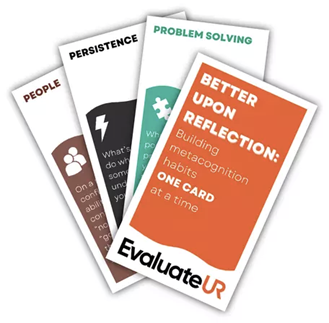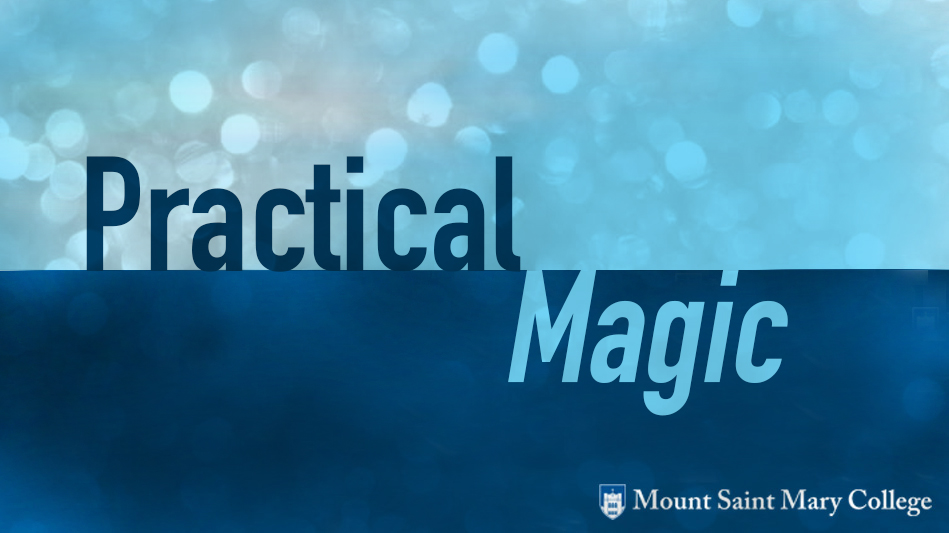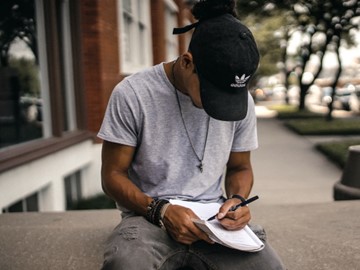by Amy Ratto Parks, Ph.D., University of Montana
Although many of us feel held in suspense about the state of teaching and learning in the fall, there is one thing I know for sure: I will still be using the Blind Draft assignment. The Blind Draft is a homework assignment that requires students to compose a short draft into a completely blackened computer screen; without any visual cue from the writing, they quickly become aware of their thinking. This single assignment builds classroom community, grounds students in their own minds and bodies, introduces them to a new way of understanding themselves as learners, and kicks off a course-long conversation about metacognition.
Right now, teaching and learning are happening in a remarkably distracting set of circumstances. National and global issues lead us into internet news and social media cultures that have had wide-ranging and varied impacts on teachers and students in Western cultures. Through the visually dominant world inside our screens we are propelled forward (Brockman, 2011) away from our own minds and bodies and into carefully sculpted Instagram lives, snappy Twitter feeds and sharp info graphics. But in order for teaching and learning to happen well, our minds have to move away from the glossy surface and focus on the task at hand. We know that students who are able to monitor their attention by developing skills in attention literacy (Brockman, 2011) also demonstrate strong meta-cognitive awareness and are positioned for a productive learning experience (Tarricone, 2011).
The Blind Draft offers students an initial small step into meeting their own minds as learners. It creates a unique and memorable composing and revision experience that provides a platform for experience-based reflection and conversation about how differently individual student’s minds might respond to novel learning challenges (Yancey, 1998). Those conversations provide an opening into a discussion about how metacognitive concepts help us understand how to navigate writer’s block, writing anxiety, and other common writing barriers. Supporting a sustained conversation about how students respond to writing challenges will help athleticize their attention (Caldwell, 2018), build personal understanding, and help them develop an increased sense of agency (Negretti, 2012) over their own identities and abilities as writers.
The Assignment
One of the most beautiful things about the Blind Draft is the simplicity of its design, however, it does work best with a bit of set up at the start because students immediately question the simplicity.
The set up
Because students focus so carefully on their grades, there is an underlying sense of risk in any work assigned in a class. Therefore, it is important to frame the assignment as an experiment where the goal is to participate in the experiment so that you all will have something interesting to talk about during the next class. You will also want to think of a very (very) general writing prompt such as, write about “you and food” or “you and happiness” for students to respond to in their drafts.
The directions
In general, the work happens in three parts: 1) Students type in response to the prompt without being able to see what they’re typing for 15 minutes. 2) They revise the messy blind draft. 3) They reflect briefly on their own writing behavior You might offer them the following directions:
Step 1: Compose (Note: The blind drafting process works best when typing on a computer)
- Set a timer for 15 minutes.
- Open and save a blank document. (Note: Saving the document before typing is important because sometimes typing blindly leads one to delete the entire document!)
- Make a mental note of the writing prompt.
- Turn off or cover the screen.
- Type without stopping for 15 minutes.
- Print or save document as “blind draft.” (Note: This will be your preference depending on whether you are collecting hard copy or electronic versions. The important thing is simply that they specify which draft was the blind draft and which was the revision. It seems as though that would be obvious, but sometimes it isn’t.)
Step 2: Revise
- Revise the draft into 1-2 page essay. (You can keep everything from the first draft or nothing at all and rearrange as you please.)
- Print or save document as “revised blind draft.”
Step 3: Reflect
- List the kinds of changes you made between drafts.
- Did you like this exercise? Hate it? Something in between?
- Where did you rest your eyes without a screen to study?
- Print or save document as “reflection.”
These instructions often cause laughter or anxiety — or both. Students need reassurance that yes, that first draft will be a terrific and spectacular mess, and that yes, that is the goal; they also appreciate a reminder that the second draft allows them to share a stronger more controlled version of their writing.
Student Responses
It turns out that students either love or hate this assignment; there is very little in between. I begin the discussion of the drafts by asking people to raise their hands if they hated this assignment, then if they loved it, and this initial question is often enough to begin a robust conversation about how differently they engaged with the writing. Why would some people feel constrained by this and other feel liberated? Right from the start, they are plenty baffled by anyone who had an experience that differed from their own.
Specifically, students say similar things about the assignment. Mostly, they notice everything their minds were doing besides writing. The often found themselves asking:
- How long is 15 minutes? They report that they fixate on wondering how much time has passed and whether or not they are writing quickly. (In other words, am I doing a good job?)
- How much am I writing? They report fixating on how much they have written, even when there is no assigned length requirement. (In other words, am I doing a good job?) They also realize that while they were distracted by the blind writing, they didn’t notice how much they were writing. Some students report writing less than they imagined, but most write more (and often report that they had no idea how often they’re thinking about page length rather than the topic of the writing).
- Why did I try to fix the errors? In every class, students will laughingly recount trying to backspace and delete an error – even when they are not sure they made an error. They describe trying to count backward the correct number of letters to fix a spelling mistake even when they realize that it is unlikely that they will have actually corrected the error. (In other words, am I doing a good job?)
Take-away Messages
In a mini-lecture afterward, I explain that:
- The human cognitive processes are messy and unpredictable (Flavell, 1976). Therefore, we need to expect a certain amount of confusion or chaos in the learning process. Reinforcing this early in a class helps students normalize challenge and difficulty.
- The cognitive processes that inform writing of any kind are also are messy and unpredictable (Flower & Hayes, 1981). Therefore, we also need to leave room for some confusion and chaos in the writing process! This idea normalizes the fact that writing is always challenging and pushes back against the myth that writing is just easy for some people.
- The process of writing is not linear – it’s recursive. We don’t just write; we write, re-read, write, re-read (Olive, 2014). Therefore, though we all want to sit down and “hammer out” an essay, strong writing doesn’t happen that way.
- Our eyes don’t stay on the words we’re typing; they are skipping back and ahead (de Smet, M. J. R., Leijten, M., & Van Waes, L. (2018). Therefore, if you’re on a first draft and haven’t written much, your eyes keep looking back and ahead at nothing which can induce panic and mental paralysis.
- It is important to sometimes “write badly” (Ballenger, 2018). Leaving space for chaos in drafting allows us to become aware of our own mental processes, thoughts and ideas – and can make space for new connections and ideas to come forward.
You might wonder what I do after collecting this assignment since it produces a lot of material at once. Since the goal was the experience of the work, I do not line edit their writing or respond to each draft; instead, I thank them for investing in the experiment and I reinforce how beautifully messy their blind drafts were. The students really do take quite a risk by just turning in something as messy as a blind draft and it is nice to remind them that by turning it in that have confronted the chaos of their own writing minds, and therefore, have already done a good job.
Perhaps more importantly, the Blind Draft assignment helps them develop a sustained awareness of how their minds are working while writing and for many students that extends into their ability to monitor their thinking and behavior while completing other academic tasks (i.e. metacognition).
Works Cited
Ballenger, B. P. (2018). The curious writer. Boston: Pearson.
(2011) Is the internet changing the way we think? The net’s impact on our minds and future. Brockman, John (Ed.) New York, NY. Harper Perennial.
Caldwell, C. (2018). Bodyfulness. Boulder, CO: Shambhala.
de Smet, M. J. R., Leijten, M., & Van Waes, L. (2018). Exploring the Process of Reading During Writing Using Eye Tracking and Keystroke Logging. Written Communication, 35(4), 411–447. https://doi.org/10.1177/0741088318788070
Olive, T. (2014). Toward a parallel and cascading model of the writing system: A review of research on writing processes coordination. Journal of Writing Research, 6(2), 173-194. doi:10.17239/jowr-2014.06.02.4
Negretti, R. (2012). Metacognition in student academic writing: A longitudinal study of Metacognitive awareness and its relation to task perception, self-regulation, and evaluation of performance. Written Communication, 29(2), 142–179.
Tarricone, P. (2011). The taxonomy of metacognition. New York: Psychology Press.
Yancey, K.B. (1998). Reflection in the writing classroom. Logan: Utah State University Press.




